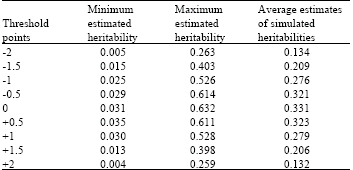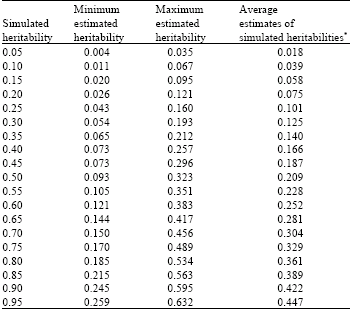Research Article
Effect of the Threshold Nature of Traits on Heritability Estimates Obtained by Linear Model
Department of Animal Science, Faculty of Agriculture, University of Tehran, Karaj, Iran
Ardeshir Nejati-Javaremi
Department of Animal Science, Faculty of Agriculture, University of Tehran, Karaj, Iran
Seyed Reza Miraei-Ashtiani
Department of Animal Science, Faculty of Agriculture, University of Tehran, Karaj, Iran
Hassan Mehrabani-Yeganeh
Department of Animal Science, Faculty of Agriculture, University of Tehran, Karaj, Iran










